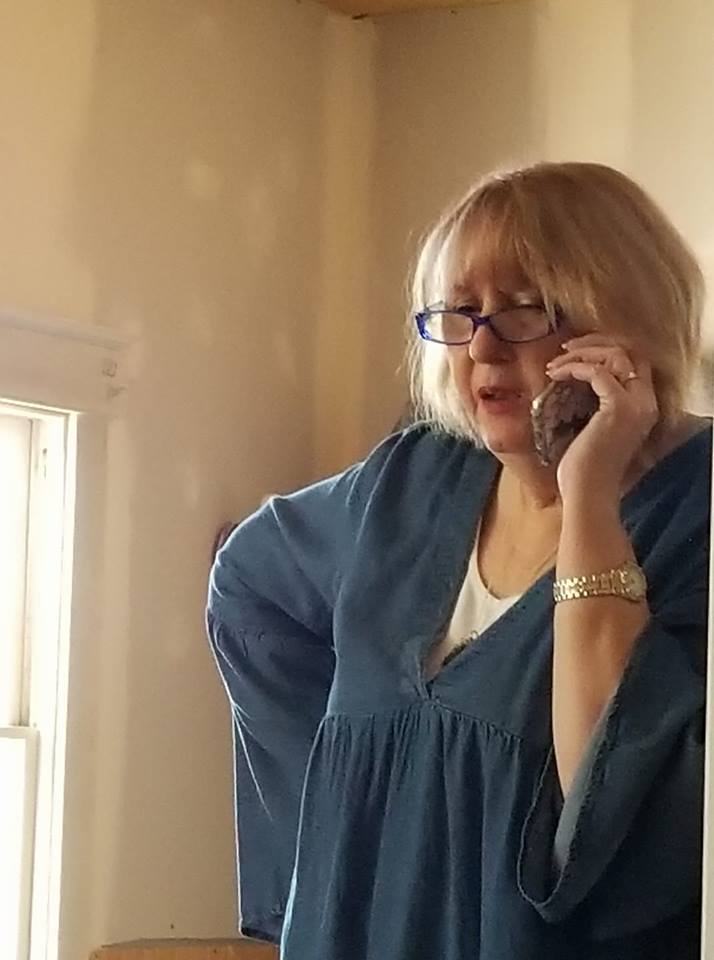The Samhain season is upon us. October is a pleasant time of year for most of us and full of enjoyable autumn traditions. Our evening fireplaces and carved pumpkins are lit, and the smell of popcorn, cider mulling, and candied apples fill the air. The country fairs are winding down and the merry go round sounds of “Let me call you Sweet Heart” have grown tired and limp along. It is a bittersweet time of memories, falling leaves, and the chill has begun to kill the summer plants turning them to brilliant colors. The last Hurrah of autumn has come and gone, and All Hallows Eve and All Souls is here; in many places bringing the first flakes of snow with it. Pagans look at this time of year with awe and reverence for it is the time of the thinning of the veil; when the spirits walk and talk with the living, it is Samhain.
In the pagan wheel of the year, Samhain is the last celebration of the year. Traditionally, it is the passing of the old year and the beginning of the new. It is the last harvest, sometimes known as the Blood Moon. It is so called, not because of the color of the actual moon, but because this is when the culling of the herd is done. Animals are selected for the next year to survive and breed, and others are selected to be food for the tribe for the coming winter. It has always been so and is still practiced today in the farming community. The country fair’s long tradition of showing animals at the fair and selling them started in this tradition of the Blood Moon. Many Four H’ers get their college and school money by raising animals for sale and slaughter at the fair, as well as “best” in show for other crafts and projects. The country fair in the United States is a long standing institution dating back to the beginning of the colonies, and the country. Before that, in Europe, the market and fair were where buying and selling was done. On the other hand, many pagans reject the raising and selling of meat and meat products and are vegans or vegetarians. So there are definitely two schools of thought on the matter, and both we try to represent equally.
Samhain is known as the last of the harvest. There is no more done in the farming year at this time other than the prior Mabon sowing of the winter wheat and grains. The last of the winter preparation is done now. Underneath the fun and festivities there is a darker part of the Samhain traditions; those of the thinning of the veil. It is this part that frightens outsiders most about Wicca and Paganism and it is this part that I am asked about the most. It is here, at Samhain, that I’d like to bring clarity to and calm some of the most misunderstood myths about our culture as Wiccans and Pagans.
First and foremost, Pagans nor Wiccans do not acknowledge the existence of either Satan or “the devil”. He (it) does not exist in our pantheons. It is ludicrous to assume that any Pagan or Wiccan worships this deity in any way, shape or form since again…he (it) is not real to us or acknowledged regardless of what any “other religion” says of us. No other religion or person is able to be an expert on all of the Wiccan or Pagan belief systems…it is not possible to be, since there are so many traditions and belief systems out there.
Since whole books have been written about Samhain, let me try to condense this just a little bit, and focus on some of the more common things about Halloween/Samhain and what they are really about; particularly, some of the frightening stuff.
Black cats: Vilified during the dark ages as witches’ familiars and often burned at the stake by themselves or with their owners. During this time just owning a black cat or petting it could get a man or woman condemned as a witch. (Hence, the bad luck.)
A witch’s familiar is an animal (pet) that is part of ritual and is used as a focus during meditations or during a circle. Animals are curious about what we do and are intensely interested if they think they might get a treat. Revels after a pagan circle is a family feast, and we feed our animals just as anyone else would. Consider how you might feel if you fed your dog at the family picnic and they carted you off for slaughter because they thought it was a pagan ritual.
It was business as usual during the dark and middle ages; often not because you were a pagan or Wiccan, but because your property or possessions were coveted by someone who was powerful. A mere accusation was often enough for a lynching or burning. We highly recommend that if you own a black cat or kitten, you keep it in during the Halloween season as there are those mislead people who would kill it just for kicks.
Jack-o’-lanterns: These little decorations used in the British Isles and Ireland, first by the Celts and later by Christians, were used first to light the way to the Summerland for the departed of the year and then later to frighten off any way faring spirits at Halloween. The earlier use was to also discourage the spirits to tarry at any home for any length of time (haunt). So the Jack-0-Lantern’s beginning utility was kept pretty much consistent over time.
Many funerary customs of late evolved from the Samhain traditions of old. The wearing of dark colors and of black is not one of them however. Many traditions of Wicca and paganism wear black (not all) because it is a blending of color and therefore all color. Some others have their ritual robes of many colors or one color to denote the season. As expected, Samhain’s colors are rich blues, autumn gold’s and oranges, harvest reds, and deep greens. Again, the Wheel of the Year is directly consulted for colors and times as it was in time beginning.
Ghosts and Spirits: In the olde religions, Samhain is recognized as the time of year where the veil between the world of the living and that of the dead is the thinnest.
Many myths of Hel and Hades (spelling is correct) are directly influenced by this time. One of the oldest of these and best known is the myth of Demeter, Persephone and Hades. Demeter is an Earth goddess whose origin goes much further back than Greece or even Egypt. Her story is originally told in ancient Sumerian (the city of Sumer, in the Fertile Crescent.) But, for our purposes we will refer to the ancient Greek version of the story; which perhaps explains the beliefs of many pagans most succinctly.
Demeter was an earth Goddess who ruled all of the seasons with sweetness, prosperity and plenty. Demeter had a daughter whom she loved with all her heart; Persephone. Persephone was good and sweet and the apple of her mother’s eye. But she was stolen by the underworld god, Hades because he had fallen in love with her. She begged and she pleaded with him to let her go. But he could not, because no one could escape the underworld once they had entered it. He tried to woo her with sweet meats and presents, but she grew more and more despondent and refused any of them, except six pomegranate seeds. Demeter, too, looked the world over for her beloved daughter but could not find her. Little by little the world died. The snow took over and desolation began to kill the world. Demeter did not care because her sorrow had overtaken her.
The people cried to the Gods to help them. A huge congregation of the Gods came together. Some were disinterested and didn’t especially care to help humanity gain back spring, summer and fall. Some cared a great deal. Many pleas went to each God, but finally everyone realized that only Demeter was missing as was her constant companion, Persephone.
Demeter was summoned and brought before the counsel of the Gods. Why was she doing this? Why did she not care anymore that her creation was dying? What could be done? Demeter told the council very plainly that Hades had stolen her daughter. Without Persephone, Demeter was prepared to die and all her creation with her. This could not be allowed. After all, without humanity and Demeter’s creation there would be no worship or service done for the Gods.
Something had to be done immediately. Hades was summoned. Hades had no intention of letting his amour Persephone go. He loved her even more than her mother did. It was a stalemate. At last, one of the cleverest and most learned of the Gods stepped forward and offered this last solution. Since Persephone had refused all but 6 seeds of a pomegranate from Hades, a compromise might be made and earth and humanity saved. If they would but agree that for six months a year Persephone would spend her existence above the earth with her mother and six months a year with Hades and become his wife all might be saved.
Demeter and Hades agreed. Persephone agreed as well since she had eventually fallen in love with the handsome God and was torn between loving her mother Demeter and being in love with Hades. All were saved. And ever since, during spring and summer when Persephone is with Demeter there is warmth and sun, prosperity and food. During autumn and winter when Persephone is home with Hades there is cold and desolation, sickness and lack because in spite of her agreement Demeter grieves for her daughter Persephone and longs for her return.
My friends, let us celebrate our agreements in both traditions and religions during this time of Samhain and Halloween; and let our disagreements dissolve into dust.
Reverend LynAnne Moon is a Sumerian pagan. She has practiced Wicca and Paganism for over 35 years and is considered a leader in her community. She is involved with and helped to create the El Paso Pagan Alliance. She is a partner with The Chaplain Services of El Paso, a partner and artist for www.thefrugalpagan.com , an online supply store for Wiccan and Pagan ritual and gifts.
Reverend Moon is a tested Bellesprit Diamond Psychic and does spiritual counseling and readings through the online site: www.numbersstarsandcards.com .
She is also the host for Divine Dimensions, on the Hey Z Radio Network, weekly on Thursdays at 8pm EST, where she interviews all sorts of people about their callings and the sacred in life.


